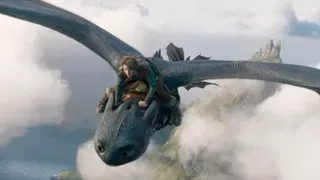August 22, 2012
An Austrian Adventure: Travels through Burgenland
Matthew Wexler READ TIME: 11 MIN.
Burgenland is not the Austria you have in mind. Maria von Trapp will not be traipsing over a mountain range. Nor will you find a gaggle of twentysomethings dressed in lederhosen while devouring Sachertorte.
Instead, you may find yourself as I did, standing in the middle of a 36-acre field with Erich Stekovics, "the Emperor of Tomatoes," while he spins tales of the precocious Bianca or the Fuzzy Cherokee with its pink exterior and olive green flesh. I stumbled through the vines with Stekovics for more than two hours, at one point looking down to discover that I was covered in juice and seeds, as if I'd had an altercation with a pitching machine filled with tomatoes rather than baseballs.
It's messy, this tomato thing. But it illustrates the Burgenland people's deep connection to the terroir and natural beauty of the region. I was on an eastern Austrian adventure, and if staying hydrated in the scorching sun by devouring handfuls of juicy heirloom tomatoes was any indication, this was going to be quite a trip.
Natural Wonder
Burgenland is Austria's easternmost state, bordering Hungary, Slovakia and Slovenia. Its 280,000 inhabitants enjoy 300 days of sunshine a year, which makes for great agriculture, including a wine industry that is thriving partly because of early support from the European Union, which matched funds for viticulture development.
Dotted along the flat countryside you'll find accommodations ranging from cottages to vineyard estates. Austria also has a rich cultural tradition in music and crafts, all of which can be explored in the small towns and villages that dot the countryside.
My first stop was St. Martins Spa & Lodge at Lake Neusiedl. Opened in 2009, the property respectfully showcases the area, which comprises a protected wildlife region that is home to 320 species, including birds, water buffalo and wild horses. St. Martins rises seamlessly out of the horizon.
"The combination of a spa, a lodge and this very specific kind of nature cannot be imitated," CEO Klaus M. Hofmann says. "The foundations for such a refuge are unique. Nature plays the leading role - in the area and in the St. Martins Spa & Lodge itself."
St. Martins' centerpiece is its thermal baths, which for centuries have offered healing and relaxation. The 109-degree mineral water is pumped from 2,800 feet below the surface, while the outdoor pool uses natural lake water. Signature spa treatments draw from their surroundings, including salt, grapes, sparkling wine and pomace. After soaking and swimming in the various pools, I felt invigorated and ready to explore the nearby national park.
The Neusiedler See National Park is a collaborative conservation project more than 80 years in the making. The first wetlands were put under protection in 1926, and further laws and agreements have been implemented. The park now belongs to nearly 1,200 property owners, primarily local part-time farmers who have agreed to discontinue working a portion of their land in exchange for an annual indemnity.
Educational and recreational opportunities abound, from walking and biking paths to observation points and stables. I ventured out with a small group, accompanied by a park ranger and plenty of high-powered telescopes and binoculars. We planted ourselves in a gazebo overlooking one of the reed patches and waited. For what, I wasn't sure. There were plenty of ducks, and I may have seen a purple heron ... or was that a spoonbill?
I looked back and saw not one of the famous white donkeys or Hungarian gray cattle that I had read about in the brochure, but one of our own - propped up against a bale of hay for an afternoon nap. She had wandered off after receiving what she perceived to be an inadequate answer to "What are we doing here?" The answer was nothing. And everything. It was a picture-perfect afternoon for a city dweller like myself, more accustomed to crowded sidewalks than wispy footpaths.
Unexpected Wine Country
Burgenland's viticulture merges centuries-old winemaking techniques with modern architecture and agritourism. While Austria is primarily known in the States for its crisp Gr�ner Veltliner and Riesling, Burgenland produces lean reds worth seeking out from your favorite local wine shop or online. Blaufr�nkisch or Zweigelt appeared regularly throughout my winery visits, each one offering a unique expression of the vintner's vision. Golden dessert wines (Pr�dikat) are also produced throughout the region.
Wiengut Triebaumer, outside the charming village of Rust, is a family-run business that has been producing since 1691, when the first Triebaumer married the daughter of a local winemaker. The current generation, Gerhard Triebaumer and his wife Claudia, now oversee the operation. The young couple took me to the family's 1,000-acre vineyard, a patchwork of plots growing an array of varieties. Chardonnay and Blaufr�nkisch are the most abundant, and when conditions are right, Ruster Ausbruch is produced (usually from Chardonnay, Welschriesling and Sauvignon Blanc). This region-specific dessert wine relies on botrytis (or "noble rot"), a naturally occurring fungus that concentrates the grapes' residual sugar.
After a delightful garden lunch at Wirthaus Im Hoffgassl in Rust, I ventured on to a different kind of winery. Weingut Hans Igler is an agricultural estate dating to 1700. It was purchased by the Reisner-Igler family in 2004 and has been revitalized and renovated as a dramatic special event space that showcases the stunning landscape as well as the wines. I tasted a flight of red wines, ranging from the 2009 Volcano, a blend of Blaufr�nkisch, Cabernet Sauvignon Merlot, and Zweigelt, to the 2006 Blaufr�nkisch Reserve, elegant with soft tannins and saturated fruit.
To complete my trifecta of Burgenland wine country, I visited Weninger Winery, a family-run operation since 1828. Franz Weninger, 33, has taken the reins and is making uncompromising organic and biodynamic wines. Not short on opinions, Weninger is quick to say that Austria's 1985 wine scandal (in which brokers added diethylene glycol, found as a small percentage in antifreeze, to add sweetness and body to industrialized product) was positive, because it returned the industry to smaller, independent operations.
Weninger is also not particularly interested in winning awards at international blind tastings. "There's a difference between a competition wine and a solid drinking wine," he says. It is much more fun to taste when you know the person and the place."
In his case, I couldn't agree more. Donning a pair of trendy glasses and a slightly renegade attitude, he walked me through the facility, which avoids cutting-edge technologies and instead relies on a carefully calculated vinification process using spontaneous fermentation, yeasts from his own vineyard and natural maturation. With a focus on Blaufr�nkisch, the region's signature red grape, Weninger hits it out of the park with the 2008 vintage. Find it if you can, but keep it a secret.
Culinary Traditions
On the food front, Austria draws influence from throughout Europe: pastries from the Czech Republic, spices like paprika from Hungary, meats from Germany and pasta from Italy. The cuisine has become lighter and more refined in the past 20 years, yet you can still find traditional preparations throughout Burgenland.
For an authentic experience, I sought out one of the many buschenschanks that pepper the region. These taverns, run by local growers, are lively gathering places and follow a specific set of traditions. Only wine from the owner's own vineyards can be served.
And the menu? Leave your vegan pals at home, as this rustic feast usually consists of local meats, cheeses and bread accompanied by various spreads and pickled vegetables. Pandora won't be piping through the sound system either. A traditional buschenschank features live music, with the proprietor or other family members at a piano or strolling among the tables with a guitar or accordion.
While local taverns and caf�s are a delicious way to explore Burgenland's countryside, fine dining is available in the most unlikely places. I stumbled on the tiny village of Purbach and the magic of chef Max Stiegl. This speck on the map is nestled at the foot of the Leitha Mountains just south of Vienna, where Stiegl relies on seasonal ingredients to create outstanding farm-to-table tasting menus.
"Burgenland is so rich but also so raw," says Stiegl. "I suppose it's considered up and coming, but 'local' has always been part of our philosophy." My tasting featured one brilliant creation after another, from feather-light dumplings filled with cracklings served over tomato-and-ginger inflected cabbage, to a Pannonian fish soup dotted with salty nibs of speck. You may never want to leave, which is fitting: The property was once the district jail.
Culture & Craft
While Burgenland overflows with lush landscapes, quaint towns and viticulture, it is also possesses a rich arts history. Head to Raiding, the birthplace of Franz Liszt. The concert hall, built at a cost of about 7 million euros, features an interior made entirely of pine; the more modest museum next door highlights the piano virtuoso's trials and tribulations. Liszt was the Justin Bieber of his time, a wunderkind who had hordes of female fans tearing at his clothes and was known throughout his career as a ladies' man.
Joseph Hayden is another local musician who made good. From baroque to Sturm und Drang and eventually comic operas, much of the composer's prolific career was spent as a court musician for the noble Esterh�zy family at their country estate. The Hayden Trail, which offers insights into the master's life, is also an intimate introduction to Eisenstadt, the state capitol of Burgenland.
The sounds of Austria have their own allure, but deep within Burgenland you can discover a material form of craftsmanship: hand-printed indigo fabrics. The Ko� family has used traditional techniques for printing and dying fabrics since 1921 and is one of a handful of businesses in Europe still applying these labor-intensive techniques.
I toured the facility (housed in two small buildings behind the family's house) and witnessed the delicate artistry involved in creating the deep blue bolts of fabric. The indigo paste is a highly guarded family recipe passed down through the generations.
The Ko�s' specialty is double-sided printing, which showcases a different pattern on both sides of the fabric through the use of an old rotary printing machine. Few places or people in the world take such pride in their work. I bought a traditional apron and am convinced that my cooking tastes much better when I'm wearing it, as if Joseph Ko�, the patriarch, imparted some of his work ethos into the fabric.
Another Sunny Day
Burgenland, with 1,500 miles of bike paths, countless vistas, and multitude of cultural and gastronomic offerings, is a hidden gem. I was delighted by each twist and turn of my adventure. People live simply, and the region feels untarnished by industrialization. They breathe fresh air and work with the earth to produce an array of fresh produce, quality wines, and free-range sheep and cattle. Music, art and craftsmanship express the surrounding beauty.
Best of all, time seems to move a bit slower in Burgenland, and at the end of another sunny day, that's a good thing.
Burgenland Travel Guide
Experience
Erich Stekovics, "Emperor of the Tomatoes"
Tours offered July through September
www.stekovics.at
Franz Liszt Geburtshaus
www.raiding.at
Hayden Walking Tour
www.austria.info
Blaudruckerei Ko�
www.originalblaudruck.at
Stay
St. Martins Spa & Lodge, rooms from 130 euros/night
www.stmartins.at
Pannonian Living, a collection of regional accommodations.
www.pannoniscwohnen.at
Dine
Wirthaus Im Hoffgassl
www.hofgassl.at
Gut Purbach
www.gutpurbach.at
Wineries
Weingut Triebaumer
www.triebaumer.com
Weingut Hans Igler
www.weingut-igler-at
Weninger Winery
www.weninger.com
For more information on Burgenland wines, visit www.weinburgenland.at
____________________________________________________________________________
Matthew Wexler is EDGE's Senior Editor, Features & Branded Content. More of his writing can be found at www.wexlerwrites.com. Follow him on Twitter and Instagram at @wexlerwrites.



